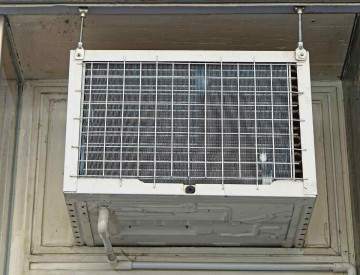
Ways to Prevent Shipping Container Condensation
Ways to Prevent Shipping Container Condensation
Think of when you parked your car under the sun and left it there for an hour. When you got back to your car, could you endure the heat? I think not. You had to air it out and turn the air conditioning on to make it cool inside. It’s the same with shipping containers. They are made of steel, which effortlessly absorbs the surrounding temperature. As a result, constant and significant container temperature fluctuation causes condensation. Like our homes, the shipping container’s roof contributes most to the absorption of the temperature because it is what catches the sun’s heat first.

What is Container Condensation?
Shipping container condensation occurs when the temperature of the shipping container’s walls is lower than the interior air’s dew point. Consequently, air moisture settles on the container and is sometimes called “container sweat.” If not acted upon immediately, it can cause container molds to grow on your load. This is especially disastrous if you’re storing perishables or temperature-sensitive objects inside your shipping container (foul odor can be a side effect of molds). Aside from molds, container rust also has a chance to appear and spread as moisture reacts with metal. Nevertheless, there are ways to minimize your container from absorbing the surrounding temperature so readily.

Shipping Container Ventilation
Shipping container ventilation permits natural airflow and allows humid air to escape. In addition, shipping container ventilation is necessary because it helps keep heat out of your shipping container, preventing condensation. Preventing and avoiding container condensation prevents container molds, rust, and heat build-up.
How to Ventilate Shipping Containers
- For natural ventilation, industrialists recommend a whirlybird vent on the roof combined with vents on the walls or opposite sides of the shipping container. Shipping container vents function best when positioned opposite each other. Therefore, it is best to acknowledge the placements of the shipping container vents concerning the direction of airflow.

- Aside from whirlybirds, you can install exhaust vents or extractor fans. This type of ventilation is called mechanical ventilation. The fan extracts the humidity before it settles on your load and turns into moisture. In very humid places like Brazil, simple vents are insufficient and require mechanical ventilation to reduce humidity in homes.
 Place windows just below the roof to allow air to flow through the container. Positioning the windows this way keeps the container cool on hot days and helps in reducing container humidity.
Place windows just below the roof to allow air to flow through the container. Positioning the windows this way keeps the container cool on hot days and helps in reducing container humidity.
Air conditioning Units
If you have a power source for your shipping container, you may install an air conditioning unit. Installing an air conditioning unit in your shipping container is pertinent if you’re reusing it as a home, office, meat shop, refrigerator, etc. One window-type a/c will suffice for one 20-foot shipping container, but you might want to consider a more substantial unit for a larger shipping container.
Additional Tips

- Charcoal bags absorb moisture, prevent odor, and purify the air. You can place one bag on each end of the shipping container. Remember to replace it every few months.
- Painting the shipping container’s exterior with white paint reflects the sun’s heat and reduces the container’s breathing during a full day of temperature fluctuation. Additionally, zinc paint (which contains 90% dry zinc powder) can slow rusting of the exterior steel and prevent rust penetration.

- Avoid painting your shipping container with dark colors as they conduct heat, overheating the interior, especially during the summer.
- Additionally, with proper ventilation, you should also arrange the items inside your shipping container so that they don’t cram tightly together. You can stack them off the floor on shelves to provide better airflow inside the shipping container.
Preventing shipping container condensation can help you achieve a lot of things especially if you’re storing perishables. So, remember to always keep your cargo dry to avoid molds, odor, and rust!

